
Winter
-
Posts
2362 -
Joined
-
Last visited
Content Type
Profiles
Forums
Events
Posts posted by Winter
-
-
that's some gnarly road rash.
-
TdF is one by a team, not an individual. Someone should mention that to Cuntador.
because Armstrong was working for the team when he challenged Contador for leadership?
when did he challenge contador? he never did anything to compromise contador's lead. the only thing was the over-dramatized move that lance cued onto in stage 2, which contador wasn't in position for. there were plenty of times that lance could have attacked, but instead stayed back w/ wiggins, schlecks, etc.
From my armchair, it looks to me that 1) Astana didn't try to bring Contador back (or limit the damage to their official leader) in the lead group on stage 2 but rode with the breakaway, 2) Armstrong said several times he was racing to win even though he didn't have the gas to do it by attacking and was probably going for a tactical win (keeping it close enough with Astana controlling the race, then hope for something like the bordure of stage 2 or Contador making a mistake, etc ..), 3) how many times did we see no Astana rider in support of COntador unless Lance was in that group versus how many time did we see Kloden pacing Lance when he was in trouble, 4) contador was isolated within Astana with most team members rallied around Armstrong and Lance poking jabs at contador from the get go (plus all the details that are surfacing now about what happened before the ITT), ... show that a power strugle was taking place between Contador and Lance even though Contador was the official team leader.
1) Why would Astana organize a chase when ALL of the other GC riders missed the break? Basic team strategy - don't reel in one of your riders when he's up the road.
2) Lance backed up off as soon as it was apparent that Contador was the stronger rider and declared his support for Contador, which he demonstrated the way he rode through the Alps.
3) Contador had Astana support the entire time except when he attacked his own team. Kloeden was fully committed to Contador and the team, but Contador attacked and dropped him for no reason when they were out with the Schleck's.
4) What happened before the ITT? Haven't seen that.
-
-
strong effort Bill!
-
Bleeding in the gym is the traddest.
-
There has been some discussion recently about the Cloud Cap area, so I figured I would post this public notice from the forest service about the rehab project they have in the works.
Dear Interested Citizen,
The Hood River Ranger District on the Mt. Hood National Forest has identified you as an individual, agency, or organization that might be interested in commenting on the Gnarl Ridge Restoration proposal. The restoration proposal includes two projects: 1) the removal of trees felled along the Cloud Cap Road for future aquatic restoration projects; and 2) the planting of 300 to 450 acres within specified areas in the Cloud Cap Tilly Jane Historic District. In addition, we would like to take the opportunity to scope for comments on the Cloud Cap Weather Station proposal given that it is in the same geographical location as the Restoration proposal.
The Gnarl Ridge Fire was started by lightning on Thursday night, August 7, 2008 on the north flank of Mount Hood within the Mt Hood Wilderness. Suppression actions were taken on the fire but 10 days later heavy rains significantly reduced fire activity and risk. At this point the fire area was estimated to be 516 acres. On September 15th and 16th, unusually hot and dry conditions coupled with a persistent thermal belt during the night caused the fire to make a major run northward and spot outside of the wilderness boundary. Suppression efforts kept the overall size to approximately 3,280 acres with the majority of acres inside the Mount Hood Wilderness area and now newly designated and pending wilderness additions ( March 2009 - Cloud Cap addition and the pending Tilly Jane Addition).
Cloud Cap Road Tree Removal for Aquatic Restoration Projects
Background: To provide for firefighter safety the Incident Management Team on the Gnarl Ridge Fire was authorized to fall hazard trees along the Cloud Cap Road. Due to the high number of hazard trees and the ‘switchback’ nature of the road it was essential to use mechanical equipment to safely fall the hazard trees. As a result, there is a corridor of felled trees, ranging from 100 feet to 150 feet on each side of the road. Presence of the felled trees not only affects the visual quality along the road but also will make it difficult to replant trees in this area.
Purpose and Need: The overall purpose of the project is to gather logs (a.k.a. fish logs) from this area to utilize in future aquatic restoration projects. The Mt Hood National Forest has a variety of aquatic restoration projects planned in the current and future years and gathering sufficient material to meet this need has been difficult. There is also an underlying need to remove felled material (that which is in excess of needs for site productivity) along the Cloud Cap Road to: 1) restore visual quality; and 2) to facilitate restorative actions such as replanting with native species.
Proposed Action: To remove felled trees within 100 feet of the Cloud Cap Road utilizing equipment that will stay within the road prism. The equipment will either pick up and swing logs onto log trucks or, where necessary, may pull logs with attached cable sufficiently close to where they can be picked up with the grapples. Felled trees identified for removal will be those that are in excess of site productivity and wildlife habitat needs. Logs will be hauled from the site and stored in a secured area for future use in aquatic restoration projects. Some of the smaller sized material that is not needed to be retained on-site for site productivity or wildlife habitat, and which is not large enough for use in aquatic restoration, may be removed down to a more accessible location and be made available as firewood to be gathered under a personal use permit. Depending upon weather conditions, the proposal is to remove the logs either this fall (October or November, 2009) or next summer (2010).
The legal description for this project is T2S, R9E, Section 10. This location is outside any designated or newly designated or pending wilderness areas.
Decision to be Made: The Hood River District Ranger will decide whether or not to remove felled trees along Cloud Cap road to be used in aquatic restoration projects. This project will be analyzed under a categorical exclusion, category 36 CFR 220.6(e)(7): “Modification or maintenance of stream or lake aquatic habitat improvement structures using native materials or normal practices” (FSH 1909.15-2007-1, 31.2, 4/17/09). The analysis for this project will be undertaken by an interdisciplinary team and documented in a project file. If it is determined that no extraordinary circumstances exist (see FSH 1909.15, Chapter 30.3), the proposed project may be documented in a Decision Memo. A decision on this project is expected in August 2009.
Gnarl Ridge Planting Project
Purpose and Need: The overall purpose of the project is to re-vegetate and restore portions of the Gnarl Ridge Fire. To meet this purpose, there is an underlying need to plant portions of the burned area with native plant species. The legal description of the project is T2S, R9E, Section 10. This is the area on the north flank of Mount Hood, near Cloud Cap Inn.
Proposed Action: Approximately 450 acres of the Gnarl Fire area outside the existing, newly designated and pending wilderness areas were identified as areas suitable for planting with native tree species (see attached maps). Approximately 30 acres near Cloud Cap Inn is proposed for planting which would include whitebark pine, a historically occurring species whose populations are declining in this area and throughout the west. Use of native grasses and tree species would be emphasized in areas which burned severely. In addition to whitebark pine, other species to be planted include quaking aspen, white pine, noble fir, western larch, Engelmann spruce and subalpine fir. The planting area is within the historic district and within ¼-mile of roadways in areas of moderate and high soil burn severity. Overall, approximately 300 acres would be planted in the Fall 2010. Additional acres may be planted if funding is available.
The legal description for this project is T2S, R9E, Section 10. This location is outside any designated or newly designated or pending wilderness areas.
Decision to be Made: The Hood River District Ranger will decide whether to plant portions of the burned area with native plant species. This project will be analyzed under a categorical exclusion, category 36 CFR 220.6(e)(11): “Post-fire rehabilitation activities, not to exceed 4,200 acres (such as tree planting, fence replacement, habitat restoration, heritage site restoration, repair of roads and trails, and repair of damage to minor facilities such as campgrounds), to repair or improve lands unlikely to recover to a management approved condition from wildland fire damage, or to repair or replace minor facilities damaged by fire” (FSH 1909.15-2007-1, 31.2, 4/17/09). The analysis for this project will be undertaken by an interdisciplinary team and documented in a project file. If it is determined that no extraordinary circumstances exist (see FSH 1909.15, Chapter 30.3), the proposed project may be documented in a Decision Memo. A decision on this project is expected by August 2009.
Cloud Cap Weather Station
Background: In 2008, as a result of the Gnarl Ridge Fire, a temporary weather station was placed in the Cloud Cap area. Weather data, especially rainfall amounts, varied significantly from data acquired from other weather stations located within a ten mile radius of the Cloud Cap area. This discrepancy brought to light that weather patterns at Cloud Cap were significantly affected by local topography. Rainfall documented at the Red Hill weather station (5 miles NW of Cloud Cap) was almost one-half of that recorded at the Cloud Cap temporary weather station in 2008. Accurate weather data on precipitation amounts (including snowpack) would enable Middle Fork Irrigation District (MFID) to better able manage their usage of water resources within the Middle Fork Hood River Watershed. Better usage of the water resources would have a positive effect on threatened and endangered fish species including: Bull Trout (threatened), Spring Chinook Salmon (threatened), Winter Steelhead (threatened) and Coho (candidate for listing).
Purpose and Need: The overall purpose of the project is to provide weather date that would be utilized by MFID to better enable them to monitor snow-pack and potential water yield thereby allowing them to more efficiently manage their withdrawal program from the Eliot, Coe and Lake Branch drainages. To meet this purpose, there is an underlying need to install a permanent weather station and sno-tel site in close proximity to Cloud Cap Saddle as is feasible while maintaining goals and objectives specified for the Cloud Cap Tilly Jane Historic District.
Proposed Action: The proposal is to install and maintain a solar powered weather station and sno-tel site within close proximity to the Cloud Cap Road in the Ghost Ridge area. The station would require a weather proof building (approximately 6-feet wide by 6-feet deep by 16-feet in height), precipitation gage 16-feet in height, antenna tower for data transmission, 10-feet snow pillow, solar panels, air temp and pressure sensors, wind gage, and fenced enclosure. Height of the tower would facilitate maintenance of the equipment, if needed, during deep snow conditions. Once installed, maintenance of the site would be provided by the Natural Resources Conservation Service.
In addition, Eliot and Polallie Drainages (located on either side of the Cloud Cap/Tilly Jane Historic District) are highly susceptible to debris torrent events when heavy rainfall occurs. The information collected at the site could provide for early warning of potential flood/debris torrents within these drainages that could threaten critical infrastructure such as diversion and water storage structures, public highways, and site access roads. In November 2006, such an event occurred that resulted in one vehicle parked on the Eliot Diversion access road to be swept downstream over ¼ mile. Fortunately, the occupant escaped with few injuries even though the vehicle was totally destroyed. Another benefit to the community from this project would be the ability for Search and Rescue personnel (County Sheriffs Dept. and Crag Rats) to have accurate current weather information in the event there is a need to utilize Cloud Cap Saddle as an access point for search and rescue operations on the East and North side of Mt. Hood.
The legal description for this project also is T2S, R9E, Section 10. This location is outside any designated, newly designated or pending wilderness areas.
Decision to be Made: The Hood River District Ranger will decide whether or not to place a weather station near Cloud Cap Road. This project will be analyzed under a categorical exclusion, category 36 CFR 220.6(e)(3): “Approval, modification, or continuation of minor special uses of NFS lands that require less than five contiguous acres of land” (FSH 1909.15-2007-1, 31.2, 4/17/09). The analysis for this project will be undertaken by an interdisciplinary team and documented in a project file. If it is determined that no extraordinary circumstances exist (see FSH 1909.15, Chapter 30.3), the proposed project may be documented in a Decision Memo. Analysis for this project will be completed in Winter 2009/2010 with a decision expected by March 2010.
If you have any questions or concerns regarding this proposal, please bring them to our attention by July 3, 2009. Send comments to Jennie O’Connor Card, 6780 Highway 35; Mt. Hood/Parkdale, OR 97041. For more information on the Gnarl Ridge Restoration proposal, you may contact Kim Smolt at (541) 352-6002 x703 or ksmolt@fs.fed.us. For more information on the Cloud Cap Weather Station, you may contact Leo Segovia t at (541) 352-6002 x638 or lsegovia2@fs.fed.us. Electronic comments may also be submitted to comments-pacificnorthwest-mthood-hoodriver@fs.fed.us in a format such as an e-mail message, plain text (.txt), rich text format (.rtf), or Word (.doc).
Sincerely,
DAINA L. BAMBE
District Ranger
Enclosures
-
On Sunday, abortion doctor George Tiller was murdered at his church in Wichita, Kan. He was one of a handful of doctors in the U.S. who performed late-term abortions and for decades had been a target of virulent criticism from antiabortion activists. His clinic had been bombed and vandalized, and in 1993 he was shot in both arms in a failed assassination attempt. Tiller's alleged killer, Scott Roeder, is a long-time radical antiabortion activist with reported ties to a militant antigovernment organization called the Freemen.
Within hours after the murder, every antiabortion group in the country denounced the attack. Robert P. George, a leading Catholic intellectual opponent of abortion, wrote that "George Tiller's life was precious" and characterized his murder as "a gravely wicked thing." He called on his fellow abortion opponents to "teach that violence against abortionists is not the answer to the violence of abortion."
Even Operation Rescue, the extreme antiabortion group that organized a six-week blockade of Tiller's office in 1991, issued a statement condemning the murder. "We denounce vigilantism and the cowardly act that took place this morning," Troy Newman, the organization's president, said.
These unqualified reproaches are nothing new. The organized antiabortion movement has always opposed violence against abortion providers. That has never stopped opportunistic prochoice activists, however, from conflating their passionate rhetoric with the behavior of individual criminals. True to form, on Sunday, Mike Hendricks of the Kansas City Star accused anyone who had criticized Tiller as a murderer (Tiller aborted healthy, nine-month old fetuses) of being an "accomplice" to his death.
Over the past decade this argumentative tactic has taken on an even more insidious twist. In addition to fighting violent, Muslim jihadists abroad, some liberals argue that America must deal with its own, homegrown terrorists. These are not just people who commit violence but millions of socially conservative evangelicals and Catholics -- "Christianists" -- who comprise the base of the Republican Party and threaten the stability of the country.
In 2007, former New York Times Middle East Bureau Chief Chris Hedges published a book called "American Fascists" that compared conservative evangelicals to European brownshirts of the 1920s and 1930s. That same year, CNN's Christiane Amanpour hosted a three-part series, "God's Warriors," that equated Christian (and Jewish) fundamentalists with Muslim extremists.
The comparison between the religious right and Islamic extremists is invariably partisan so as to smear the GOP as being held hostage to forces as dangerous as Hamas or Hezbollah. "Even as the Bush administration denounces and battles Islamic religious zealotry abroad, fundamental Christian zealotry is taking hold here at home," wrote Stephen Pizzo on the liberal Alternet Web site in 2004. On his popular HBO program, comedian Bill Maher frequently compares murderous Islamists to censorious Christians.
But if the reactions to the death of Tiller mean anything, the "Christian Taliban," as conservative religious figures are often called, isn't living up to its namesake. If "Christianists" were anything like actual religious fascists they would applaud Tiller's murder as a "heroic martyrdom operation" and suborn further mayhem.
Radical Islamists revel in death. Just witness the videos that suicide bombers record before they carry out their murderous task or listen to the homicidal exhortations of extremist imams. Murder -- particularly of the unarmed and innocent -- is a righteous deed for these people. The manifestos of Islamic militant groups are replete with paeans to killing infidels. When a suicide bomb goes off in Israel, Palestinian terrorist factions compete to claim responsibility for the carnage.
There is no appreciable number of people in this country, religious Christians or otherwise, who support the murder of abortion doctors. The same cannot be said of Muslims who support suicide bombings in the name of their religion.
Yet speak of the disproportionately violent strain in Islam to a "progressive" person and you'll be met with sneering recitations of millennia-old Christian crusades or Jewish settlements in the West Bank. As for conservative Christians' contemporary political endeavors, lobbying to ban the teaching of evolution in schools or forbidding same-sex marriage simply does not threaten society in quite the same way as the genital mutilation of young girls or the bombing of the London transit system.
I happen to support a legal regime that would, in Bill Clinton's famous words, keep abortion safe, legal and rare. I hold no brief for the religious right, and its views on homosexuality in particular offend (and affect) me personally. But it's precisely because of my identity that I consider comparisons between so-called Christianists (who seek to limit my rights via the ballot box) and Islamic fundamentalists (who seek to limit my rights via decapitation) to be fatuous.
In the coming days, we will hear more about how mainstream conservative organizations and media personalities created an "environment" in which the murder of an abortion doctor became an inevitability. Just as talk radio was blamed for the 1995 Oklahoma City bombing, an attempt will be made to extend the guilt for this crime from the individual who pulled the trigger to the conservative movement writ large. But the Christian right's responsible reaction to the death of George Tiller should put to rest the lie that Judeo-Christian extremists are anywhere near as numerous or dangerous as those of the Muslim variety.
WSJ
Published by the WSJ - written as an opinion piece by James Kirchik. Bio
-
ahh more friendly and totally baseless personal attacks from FW. good times on cc.com.

-
exactly apples to apples. Why is an act of violence by a Muslin labeled terrorism and an act of violence against an abortion doctor labeled murder? So, FW, should what happened to the abortion dr be labeled terrorism or not? or perhaps you'd like to change the subject again with another diversion.
-
classic diversion. look at the little birdie ... i mean Muslim terrorist! nothing to see here. move along.
-
-
First, TJ is not wilderness yet as it is contingent on the FS processing a subsequent land exchange. Second, the Cloud Cap road was explicitly left outside the boundaries of the TJ wilderness additions to allow for continued public access. Any closure of the Cloud Cap road is solely a result of the Forest Service deciding it doesn't want to maintain the road and/or allow public access. Talk to them about it.
BTW, Bill the wilderness proposal for the TJ area resulted from MHM's well-documented proposal to cut runs and build lifts throughout the entire area from the base of the existing facility all the way to Cloud Cap. The TJ trail would have been a lift corridor. Cloud Cap itself would have been a top lift terminal, and the clearcut ski runs would have been interlaced throughout the headwaters of the watershed for the farmers in the upper Hood River Valley. You should go talk to the local pear farmers, who were heavily in favor of the wilderness bill, and tell them they are stupid make-believe do gooders.
-
WA Pass. Beckey Route. South Arete of South Early Winter. Maybe Spontaneity Arete.
-
-
6 hours up/2-2.5 hours down - that's a pretty moderate pace.
-
master cams
-
meh.
-
i love how the pdx climbing commmunity gets pegged by cc.com bolting debates. nice.
now someone divulge a frickin name already and maybe we can bring in jerry springer to moderate this thread.
-
i wonder what the standard dimensions are of a regulation competition pole.
-
aye, chest beating spray fest. i'll play.
S. Howser Tower, B-C
Slesse, NEB w/ Crossover sufferfest dumbassess
Grand Wall
Rainier, Liberty Ridge w/ near death dumbassness
Shoshone Spire, South Face (need some MT luv)
-
I was there March '08. Amazing place! So many good routes all over the place and still so much more potential. What cool formations.
-
sweeet!
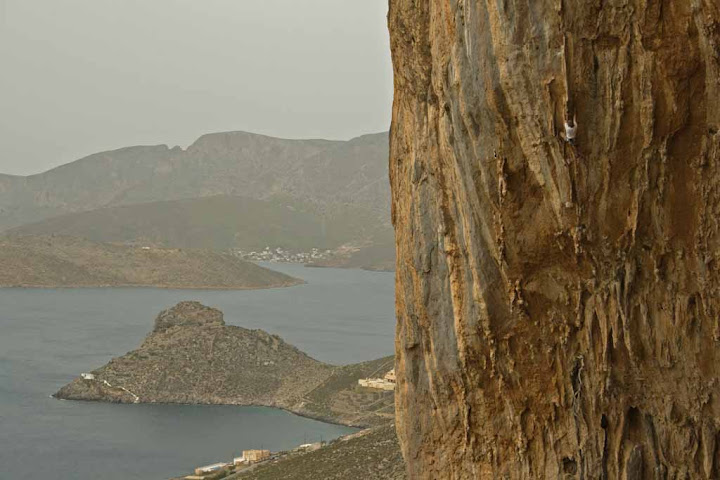
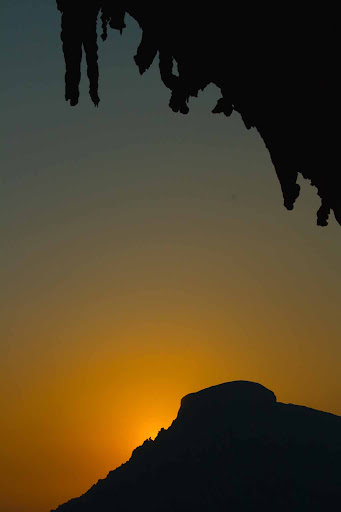

-
-
mazamas make for interesting obstacles. we dodged them on sunday, 'cause they were sitting right at the base of the sweet turns off the I saddle. good times.

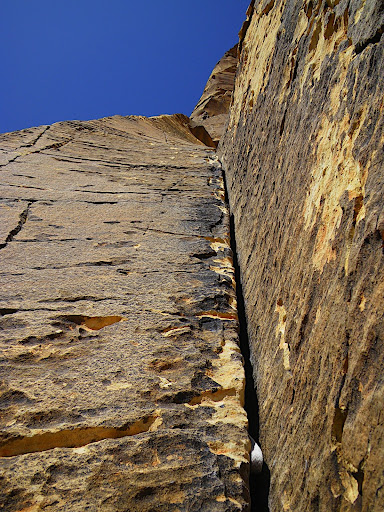
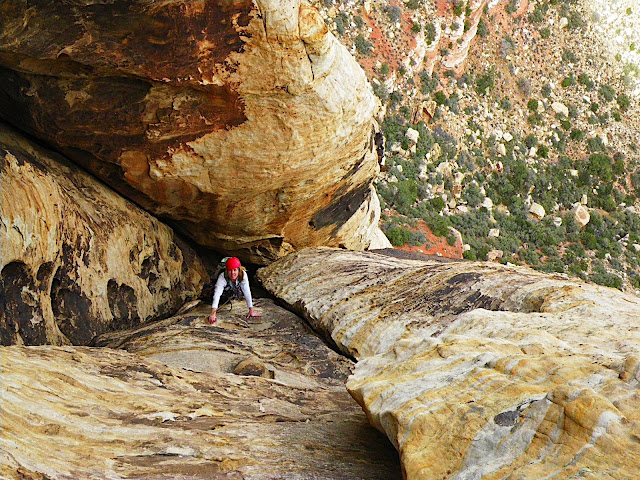
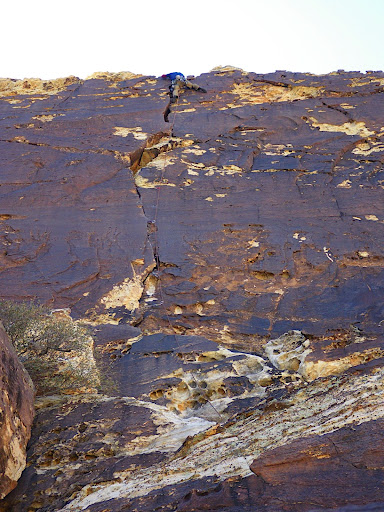
[TR] Quoddy Head State Park (reconnaissance), Lubec, ME - Various 7/29/2009
in The rest of the US and International.
Posted
Ah cool shots. Just talked to my pops and he said it rained 12 of the 14 days he was up in Maine this summer. Wettest spring/summer they have had in years.